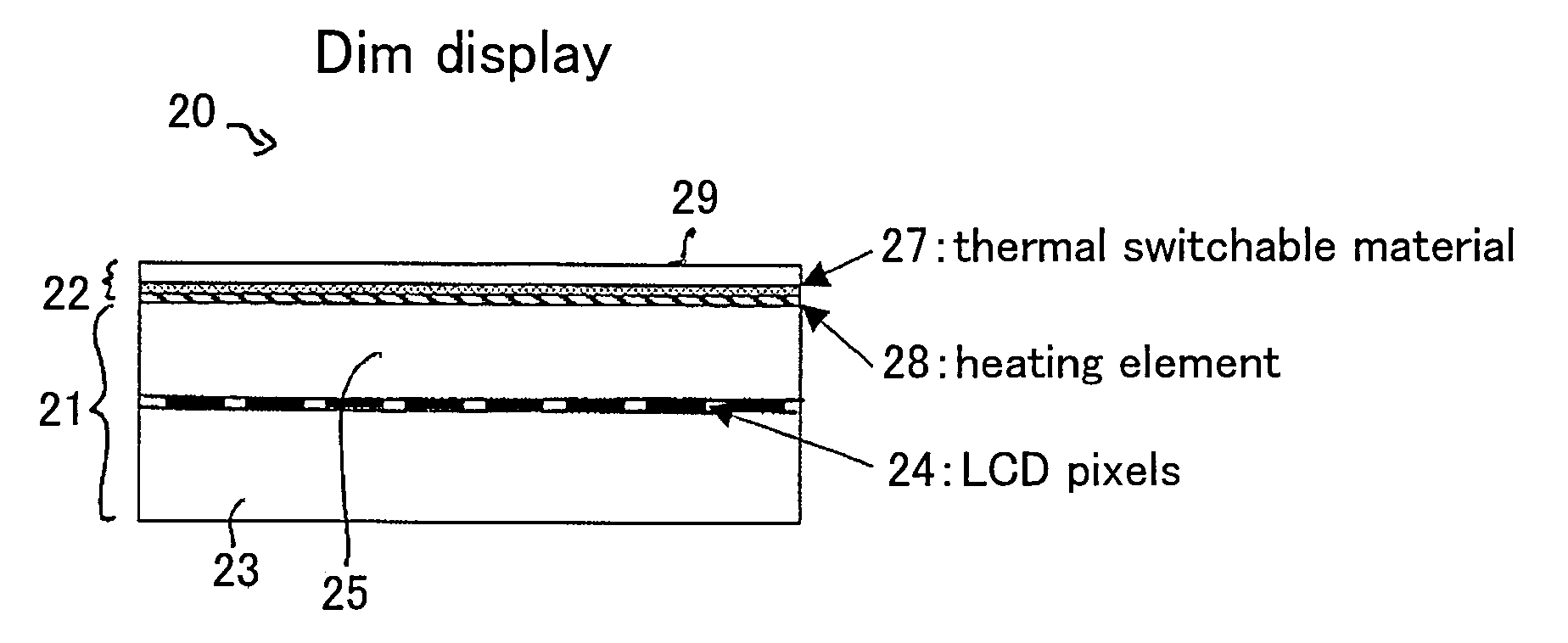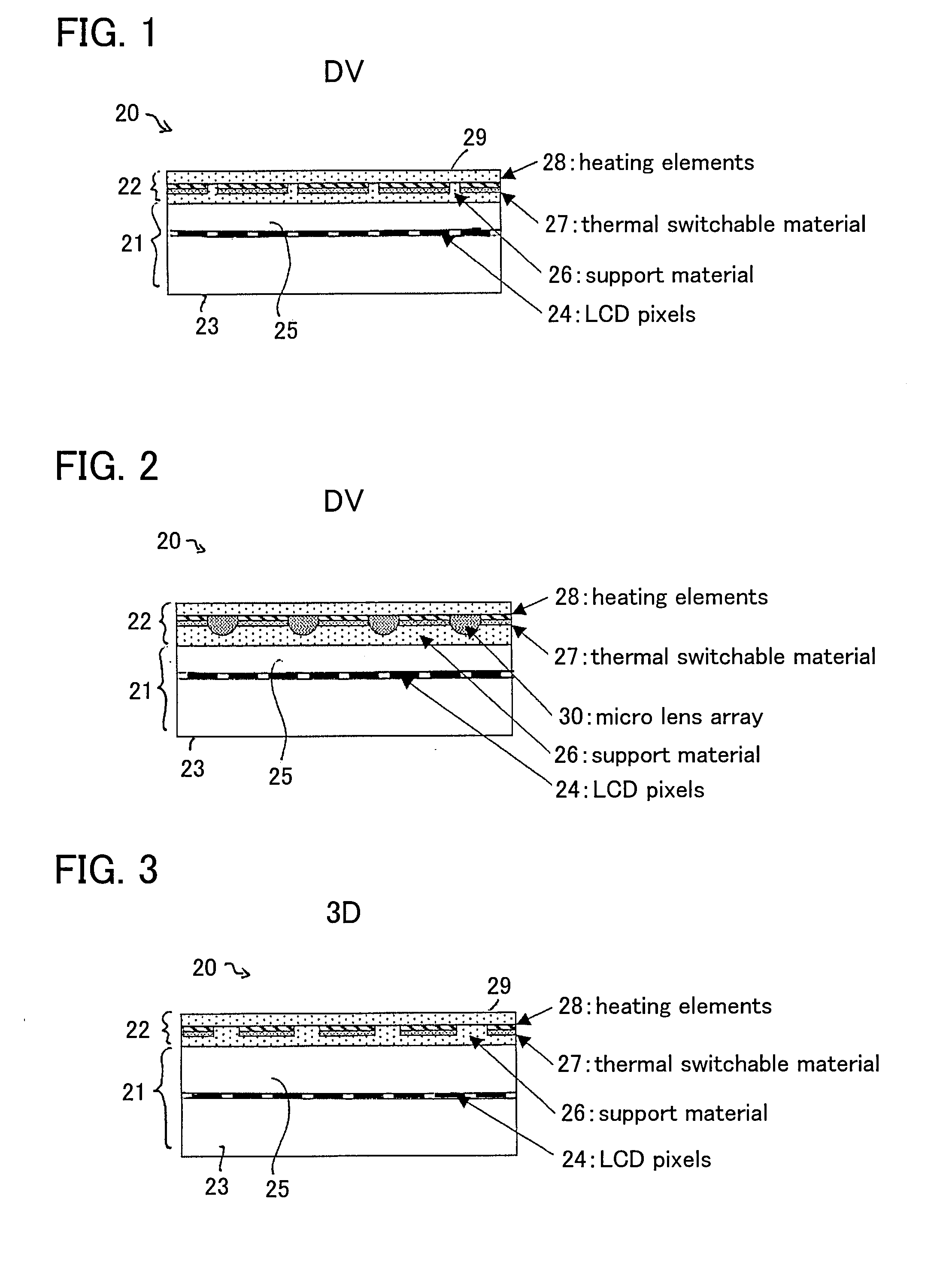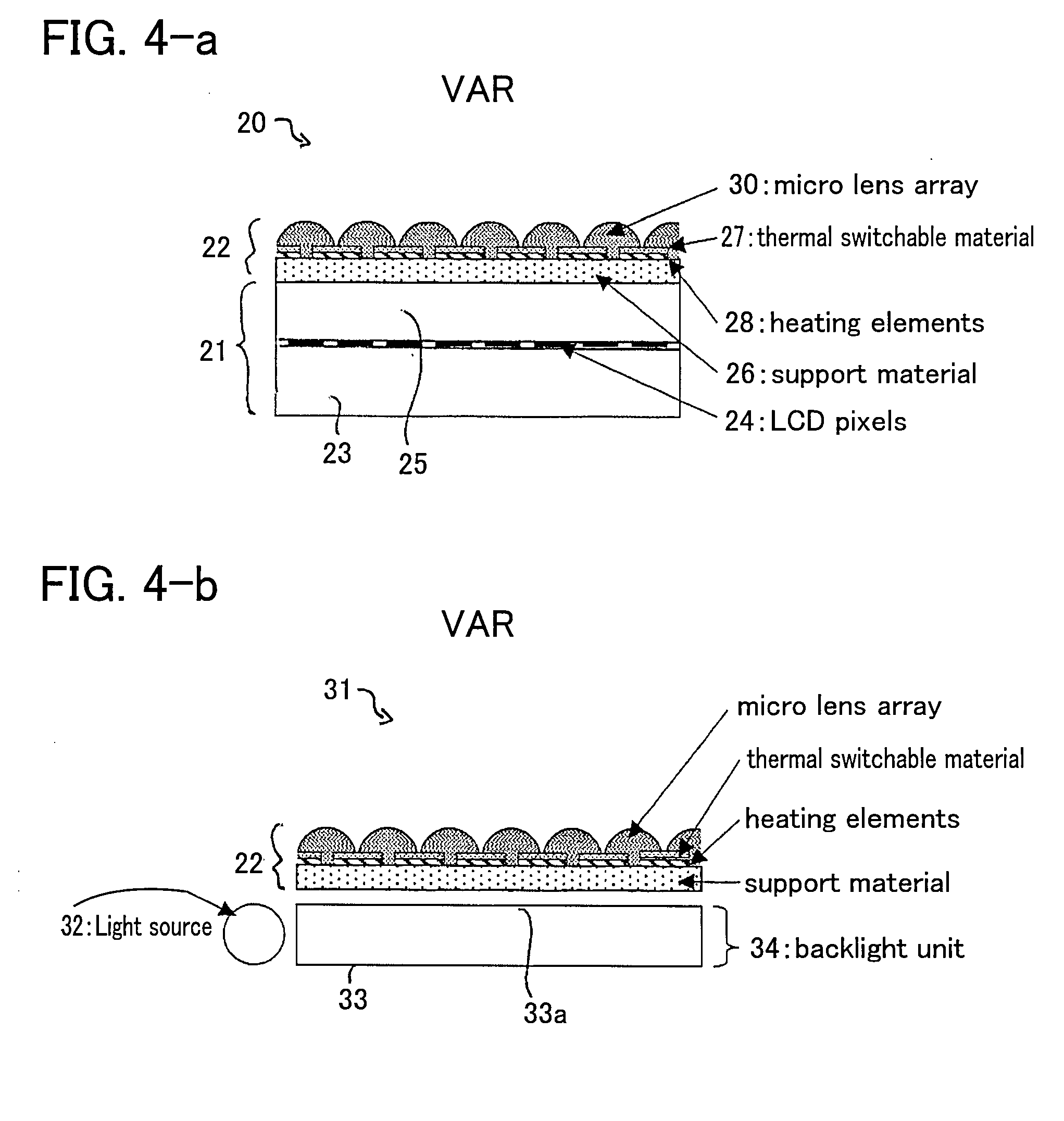Re-writeable optical element and a display, reflector and backlight incorporating the same
a technology of optical elements and reflectors, applied in the field of rewriteable optical elements, can solve the problems of increasing costs, occupying a lot of space, and requiring a separate display screen for each player, and achieve the effect of reducing power consumption
- Summary
- Abstract
- Description
- Claims
- Application Information
AI Technical Summary
Benefits of technology
Problems solved by technology
Method used
Image
Examples
Embodiment Construction
[0105]FIG. 1 is a cross-sectional view through a display 20 according to one embodiment of the present invention. The display comprises an image display panel 21 and an optical element 22 arranged in an optical path through the display panel 21. The image display panel 21 may be any suitable or conventional image display panel, and is represented in FIG. 1 as an image display layer 24, for example a pixelated liquid crystal layer, disposed between first and second transparent substrates 23, 25. The nature of the image display panel 21 is however not material to the present invention, and the image display panel will not be described further.
[0106]The optical element 22 contains a material 27 that is thermally switchable between at least a first stable state and a second, different stable state. The element also contains switching means for switching the material from one stable state to another, and in the embodiment of FIG. 1 the switching means are arranged to, in use, heat the th...
PUM
 Login to View More
Login to View More Abstract
Description
Claims
Application Information
 Login to View More
Login to View More - R&D
- Intellectual Property
- Life Sciences
- Materials
- Tech Scout
- Unparalleled Data Quality
- Higher Quality Content
- 60% Fewer Hallucinations
Browse by: Latest US Patents, China's latest patents, Technical Efficacy Thesaurus, Application Domain, Technology Topic, Popular Technical Reports.
© 2025 PatSnap. All rights reserved.Legal|Privacy policy|Modern Slavery Act Transparency Statement|Sitemap|About US| Contact US: help@patsnap.com



